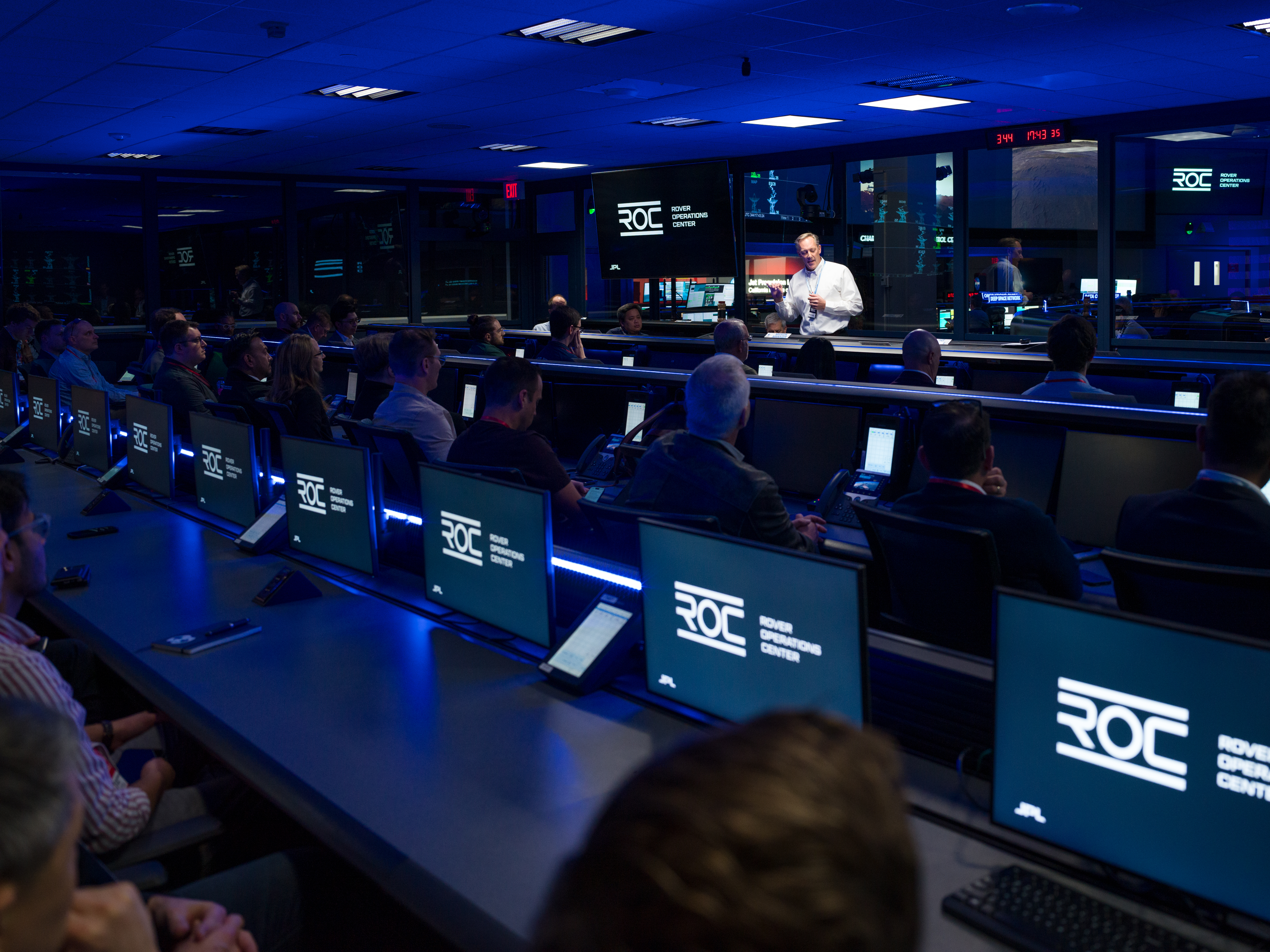Cassini Significant Events 04/23/08 - 04/29/08
May 1, 2008
(Source: Cassini Project)
The most recent spacecraft telemetry was acquired on Tuesday, April 29, from the Madrid, Spain, tracking complex. The Cassini spacecraft is in an excellent state of health and all subsystems are operating normally. Information on the present position and speed of the Cassini spacecraft may be found on the "Present Position" page at: http://saturn.jpl.nasa.gov/operations/present-position.cfm.
Wednesday, April 23 (DOY 114)
Science activities this week include a series of Composite Infrared Spectrometer ring observations, Imaging Science temporal monitoring of the F Ring, Visual and Infrared Mapping Spectrometer star calibrations, and two Radio Science operational readiness tests to prepare for the Saturn ring occultation on DOY 130.
Thursday, April 24 (DOY 115):
Based on a decrease in pointing error between the Orbit Trim Maneuver (OTM) #152 orbit determination (OD) solution and the preliminary OTM-153 OD, and recommendations from Science Planning and the Optical Remote Sensing instruments, the live update planned for DOY 120-131 has been cancelled.
The next generation of Cassini scientists and flight team members came to the lab today as part of JPL's "Take Our Children to Work Day." This event is open to children between the ages of 9-17, and is designed to help expand a child's awareness of his or her potential, and the many future options available in exploring space. You gotta figure, any child born the year of Cassini's launch is almost 11 years old, older if they were born in the pre-launch years. Give 'em till end of Prime Mission, and then the two years of extended mission and they will almost be ready for a summer internship at JPL.
Friday, April 25 (DOY 116):
OTM #153 was performed today. This is the apoapsis maneuver setting up for the Titan 43 encounter on May 12. The main engine burn began at 10:00 PM PDT. Telemetry immediately after the maneuver showed the burn duration was 3.06 seconds, giving a delta-V of 0.496 m/sec. All subsystems reported nominal performance after the maneuver.
Saturday, April 26 (DOY 117):
A non-targeted flyby of Titan occurred today.
Monday, April 28 (DOY 119):
The Cassini Program Manager has received approval from NASA Headquarters for the name chosen for the extended mission. Henceforth, Extended Mission beginning in July 2008 will be known as the Cassini Equinox Mission. On Earth, the equinox is the moment when the sun is positioned directly over Earth's equator. Due to the tilt of Saturn's pole relative to the plane of its motion around the sun, the sun will cross through the ring plane passing from the southern to the northern hemisphere in August, 2009, during extended mission. At the time of the equinox, the rings would appear edge-on to an observer on the sun, and nearly so to observers on Earth. After that time, portions of the rings and Saturn will be lit differently from before as seen by Cassini, allowing for observations that had not previously been available to the instruments on-board Cassini. To say that the scientists are excited is an understatement.
The first engineering demonstration of Madrid's DSS-54 Ka-band downlink capability with Cassini was completed earlier today. The 34-m antenna has been out of service since the beginning of February to complete the installation of this and other upgrades. Two more DSS-54 demo passes are scheduled this week: one on the evening pass today, and another on DOY 120. Data acquired during these demos will be used to assess the DSS-54 Ka-band data quality. The following was sent by one of the Radio Science (RSS) team members after the conclusion of the first demo pass:
"As a science team member of the Cassini RSS team, let me add my voice of thanks to everyone at the DSN who has worked hard to bring DSS-54 Radio Science Receiver Ka-band on line. I wanted you to know that the Ka band data are really the gems of many of our scientific investigations of the Saturn system, and that your efforts will materially improve the science return from Cassini. Thanks from all of us."
Tuesday, April 29 (DOY 120):
Cassini scientists have been tracking a visibly bright, lightning-generating storm for the last five months. This is the longest continually observed electrical storm ever monitored by Cassini. Images and the full text for this release are available at:
http://saturn.jpl.nasa.gov/news/press-release-details.cfm?newsID=837
This Weekend:
This Saturday and Sunday, May 3 and 4, JPL will be open to the public for Open House.
Cassini will have a new location and new exhibits this year, including a 3 meter (10 feet) inflatable Saturn globe, a planetary comparison exhibit featuring Titan and Earth, a 7 meter banner of the Cassini spacecraft, and the Cassini interactive adventure.































